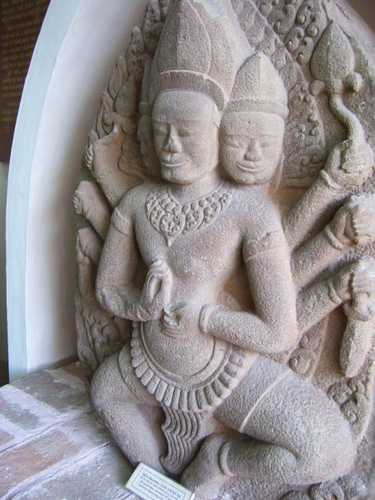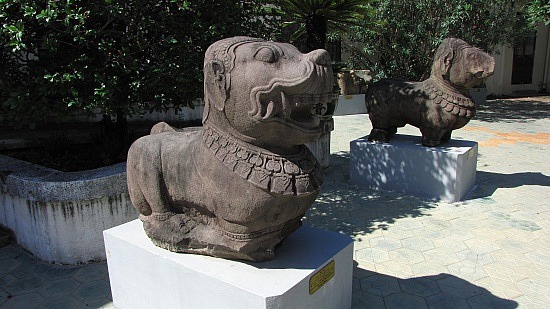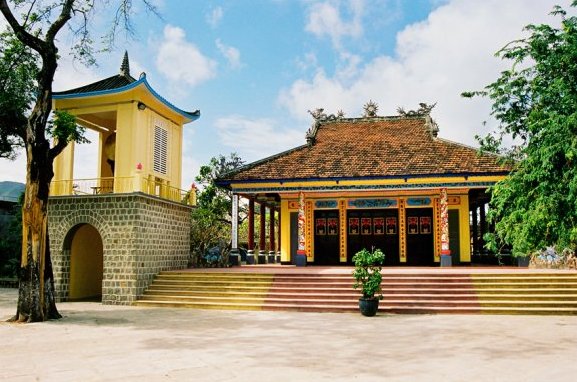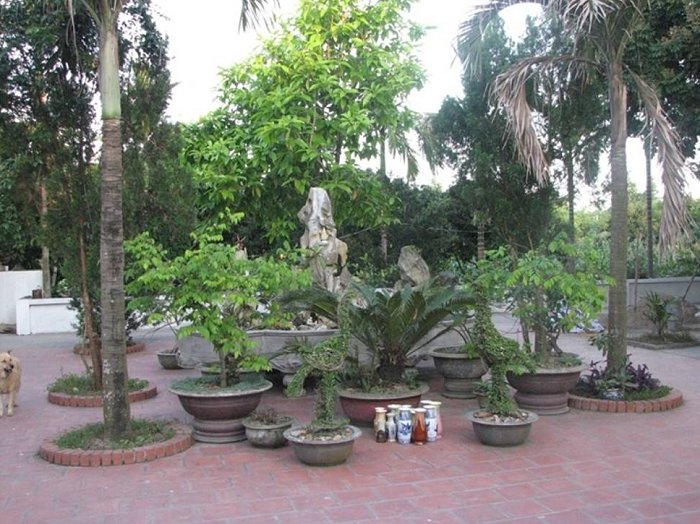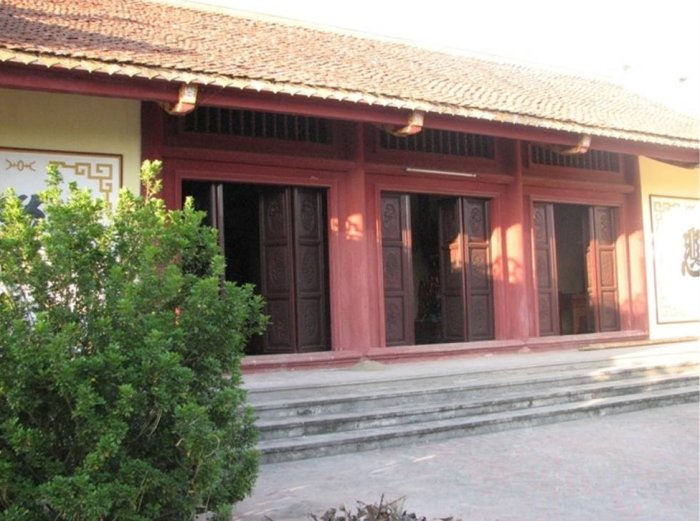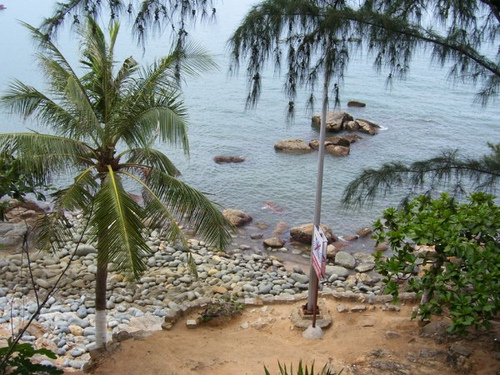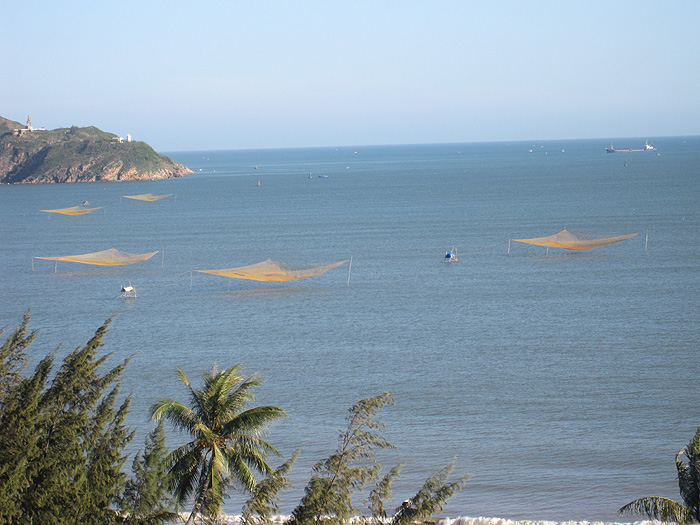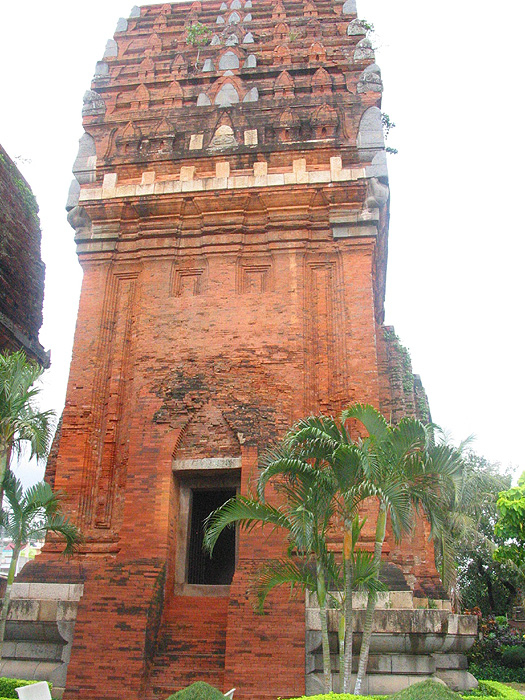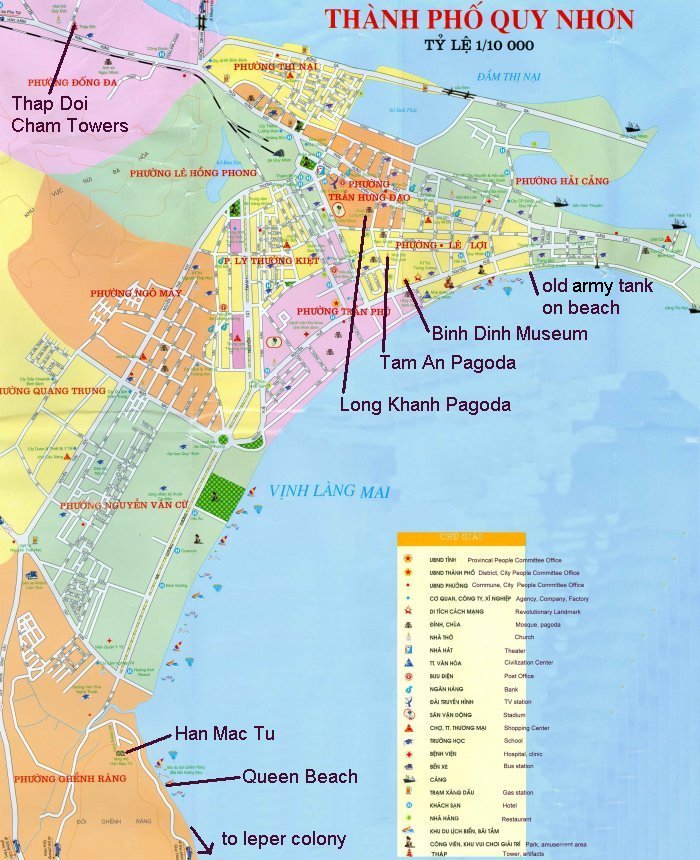 |
|||||
|
Project Vietnam Trip
to Binh Dinh Province 7-13 Nov 2009 City of Qui Nhon General Information The beaches in the immediate vicinity of the city are nothing special, but south of Qui Nhon there are some nice beaches to explore, notably on the newly-built coast road to Song Cau. On the outskirts of Qui Nhoin there are numerous Cham towers to visit, including some along National Highway 1, about 10 km north of the Qui Nhon turn-off. Binh Dinh Museum
Long Khanh Pagoda The main sanctuary was completed in 1946 but it was damaged during the Franco-Viet Minh War; repairs were completed in 1957. In front of the large copper Thich Ca Buddha (with its multicolored neon halo) is a drawing of multi-armed and multi-eyed Chuan De (the Goddess of Mercy); the numerous arms and eyes symbolize her ability to touch and see all. There is a colorfully painted Buddha at he edge of the raised platform. In the corridor that passes behind the main altar is a bronze bell that dates from 1805 and has Chinese inscriptions on it Under the eaves of the left-hand building in the courtyard, behind the sanctuary hangs a blow-up of the famous photograph of the monk, Thich Quan Duc, taken in Saigon in June 1963. In the photo he is immolating himself to protest the policies of the Diem regime. The second level of the two-story building behind the courtyard contains memorial plaques for deceased monks (on the middle altar) and the lay people. Long Khanh Pagoada was found around 1700 by a Chinese merchant, Duc Son (1679-1741). The monks who reside here preside over the religious affairs of Qui Nhon’s relatively active Buddhist community. Single-sex religious classes for children are held here on Sunday.
Tam An Pagoda Thap Doi Cham Towers The upper reaches of the small tower are home to several flourishing trees, whose creeping tendrilous roots have forced their way between the bricks, enmeshing parts of the structure in the sort of netlike tangle of which the monuments of Angkor are famous. To get there, head of of town on D Tran Hung Dao and turn right after street number 866 onto D Thap Doi; the towers are about 100m from D Tran Hung Dao. Ghenh Rang Ghenh Rang is a wild land with green mountains and blue sea. A part of the Vung Chua Mountain protrudes to the sea, creating fantastic scenery. The path to Ghenh Rang is treacherous, with wild flowers growing low clinging to tourists. Ghenh Rang Beach is a picture of rocks, sea waves. The beach is lined with scattering rocks; it turns out to be a golden sand beach at low tide. In the early 19th century, Queen Nam Phuong would bath and relax there. From the Queen Beach to the garden of rock “animals” and strange rock eggs are many modest garden houses nestling amid the plants and trees. The path to Ghenh Rang passes by the modest grave of poet Han Mac Tu. Looking at the dazzlingly yellow chrysanthemums, visitors may feel full of pity for the miserable life of this talented poet. The grave all the year round is drenched in sunlight, clouds, winds, moonlight and the murmurs of the sea. Location: Ghenh Rang is situated in the south of the poetic Quy Nhon City, 3km from the downtown.
Beaches The longer, quieter Queen’s Beach begins about 2 km southwest of the municipal beach. To get there follow D Nguyen Hue away from the tip of the peninsula westward. Further south there are several good beaches on the recently completed coastal road to Song Cau. Photos around Qui Nhon
|
|||||
